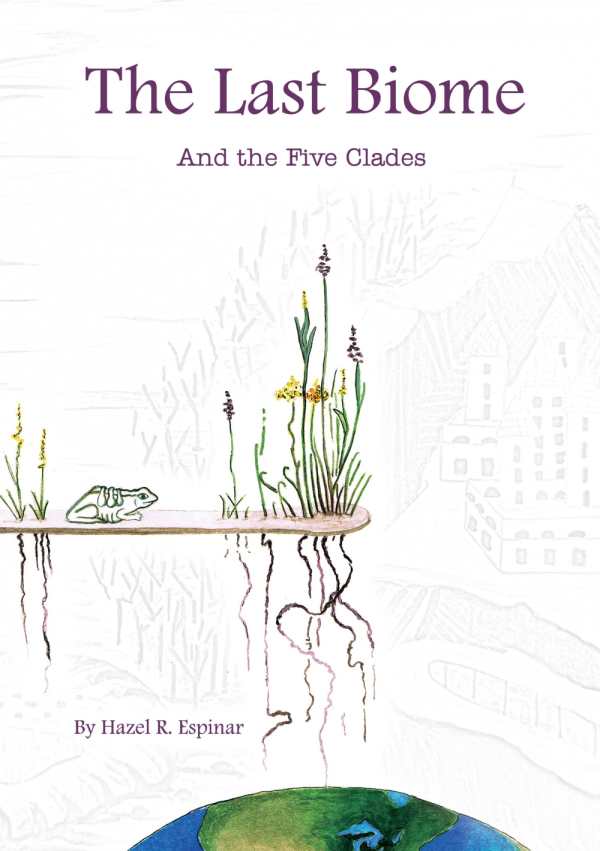
The Last Biome
And the Five Clades
The concept at the heart of the book, spreading awareness of conservation issues through fiction and fantasy, is fresh, exciting, and meaningful.
The Last Biome: And the Five Clades by Hazel R. Espinar combines magic and science in a unique story about four children who must help to preserve the land they live on in order to save two worlds. Peet, his sister Marilyn, and their friends Ray and Jill embark on an adventure that will teach them a great deal about their home and their environment, and even more about their personal power and responsibility.
When Peet discovers a large white frog, he and his friends develop a plan to dig a pond for the creature in the protected prairie lands behind Peet and Marilyn’s house, believing that moonlight might restore it to a healthy green color. There is, however, a great deal about their town of Barrenville that they do not know, and they do not understand the consequences of disrupting the natural grasses. When Marilyn proceeds to dig the pond, she inadvertently opens up a portal between Barrenville and the Kingdom of Norefole. Norefole is a magical land populated by five groups of creatures called Clades that each possess unique abilities. Four of the Clades live in peace with one another, but the fifth Clade is in league with the Cone Witch, who wants to destroy both worlds.
The plot is ambitious. Espinar has included a large cast of characters, multiple worlds, new mythology, a battle between good and evil, and an introduction to conservation and environmentalism. Though the story is very creative, there is so much going on that it is difficult to keep track of everything. The plot is compressed into a relatively short 200-page book, so the treatment of characters and events is superficial. In particular, there is no insight into the characters’ inner thoughts and feelings. A tale as complex as The Last Biome needs a strong and consistent focus in order to engage the reader. Understanding the characters’ motivation and relationships would have served that purpose.
The most compelling aspect of the story is the description of the land and the life it supports. Espinar does a lovely job explaining the importance of natural prairie lands through a conversation that Peet has with his father: “The Council worked tirelessly to understand the effects of the disappearance of the prairies, and found the grasses naturally contained and stabilized the land. They determined if the native prairie continued to shrink, the weight and elasticity of its root netting wouldn’t be able to retain the delicate balance between water and soil.” The narrative expands on this idea as the children learn to recognize and protect their home from the dark forces that would destroy it.
The concept at the heart of the novel, spreading awareness of conservation issues through fiction and fantasy, is fresh, exciting, and meaningful. The story Espinar presents is highly unique, though perhaps too ambitious for a short book. The Last Biome is the first installment in a planned series, which has the potential to be highly entertaining.
Reviewed by
Catherine Thureson
Disclosure: This article is not an endorsement, but a review. The publisher of this book provided free copies of the book and paid a small fee to have their book reviewed by a professional reviewer. Foreword Reviews and Clarion Reviews make no guarantee that the publisher will receive a positive review. Foreword Magazine, Inc. is disclosing this in accordance with the Federal Trade Commission’s 16 CFR, Part 255.
